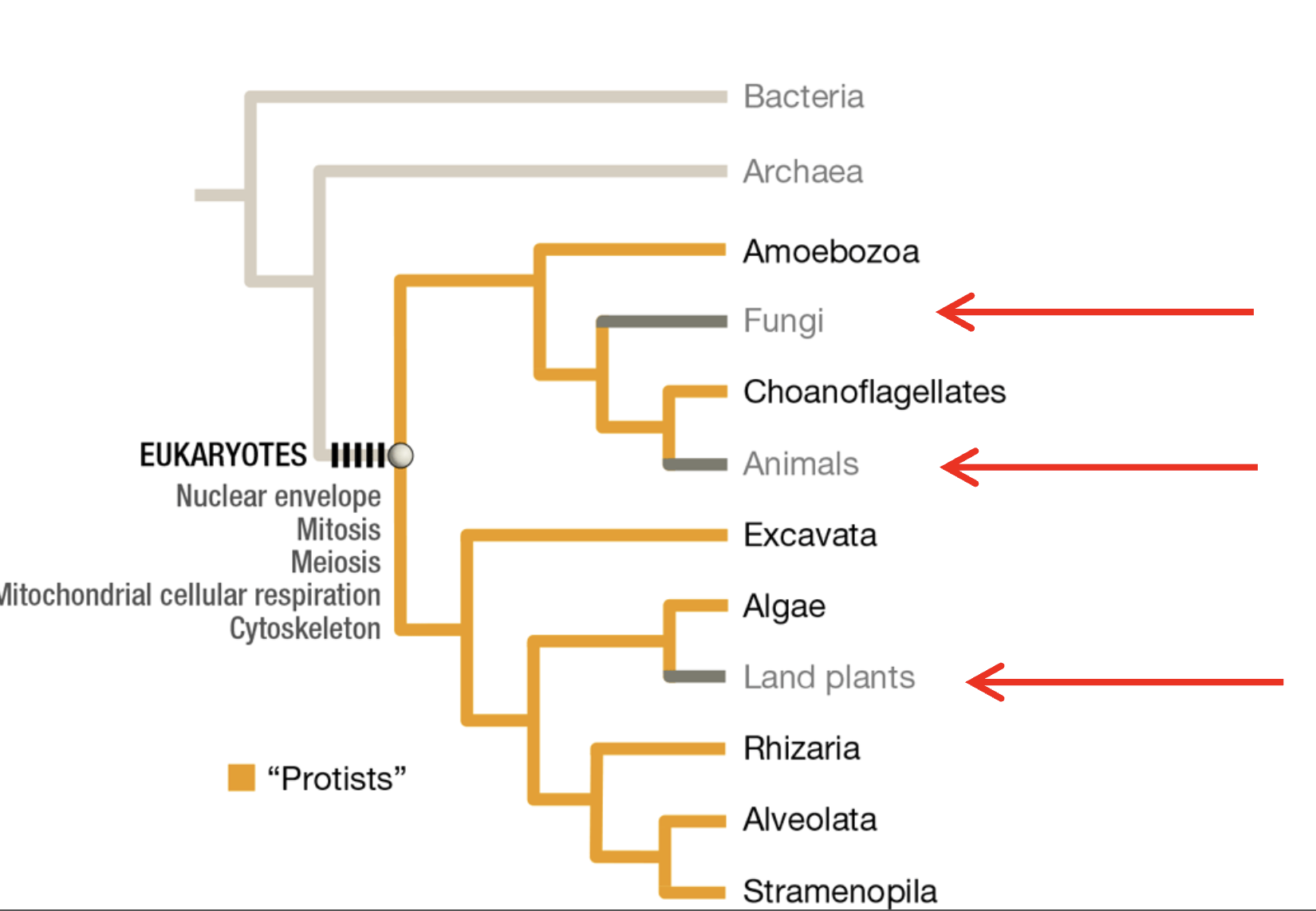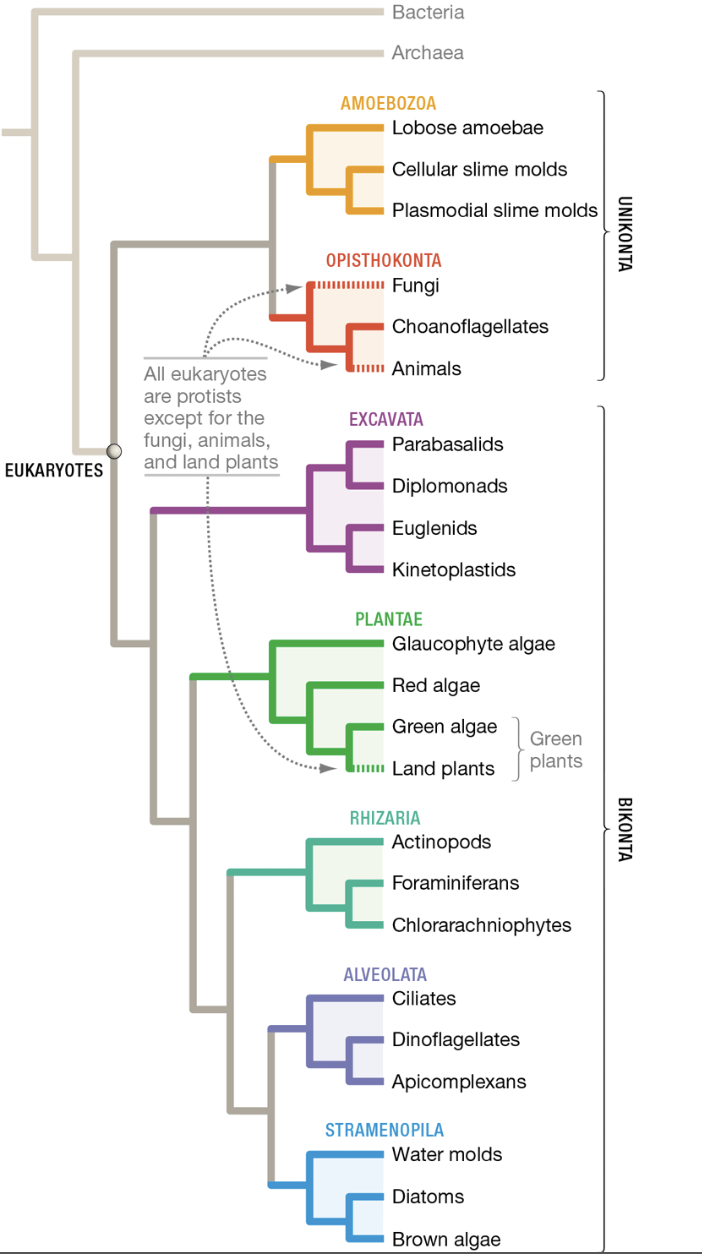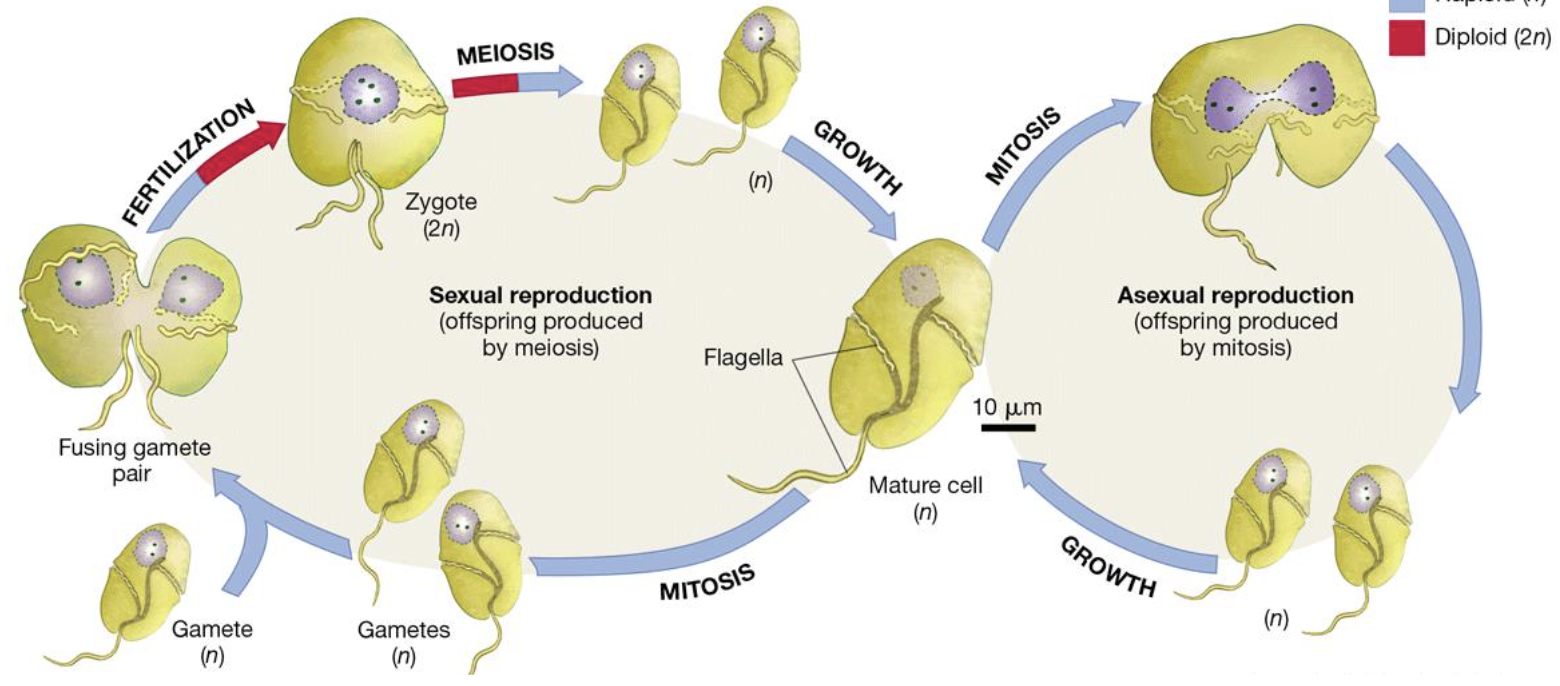
9/26
Chapter 27: Protists
The oldest eukaryote. Every eukaryote comes from a protist!
All the eukaryotes that aren’t plants, animals, and fungi are protists
Kingdoms of eukaryotes: animals, plants, fungi, and protists
Eukaryotic shared traits:
Nuclear envelope
Mitosis and meiosis
Mitochondrial cellular respiration
Cytoskeleton
Prokaryotes do not perform meiosis or participate in sexual reproduction.


There are seven monophyletic groups.
Diversity of Protists
Much of the eukaryote diversity is found among Protists
Open ocean: surface waters teem with microscopic protists, such as diatoms.
Shallow coastal waters: gigantic protists, such as kelp, form underwater forests.
Intertidal habitats: protists such as brown algae are abundant in tidal habitats.
Key Innovations of Protists:
Endosymbiosis — a eukaryotic cell eats a proteobacterium and turns it into mitochondria. This is where mitochondria in eukaryotes comes from.
Evidence of endosymbiosis: Mitochondria are similar in size to proteobacteria, they replicate by fission, they have their own ribosomes and manufacture their own proteins, they have double membranes, they gave their own genomes, and their gene sequences closely math sequences from proteobacteria.
Secondary endosymbiosis — an ancient protist eats a photosynthetic cyanobacterium and becomes photosynthetic. Another predatory protist eats the original protist and becomes photosynthetic. This is where chloroplasts in plants come from.
All species in the Plantae have a chloroplast with 2 membranes. Most likely, the primary endosymbiotic event occurred in their common ancestor.
Chloroplasts also occur in 4 of the other major lineages of protists!
No modern animals and fungi can actually photosynthesize
Reproduction in Protists:
Protists can reproduce both sexually and asexually
Sexual reproduction is unique to Eukaryotes
Diploid dominance is not the default mature stage
Multicellular protists have multicellular haploid and diploid forms: alternation of generations
Sporophytes (diploids) make spores (haploid)
Gametophyte: mature spores that makes gametes via mitosis


9/26
Chapter 27: Protists
The oldest eukaryote. Every eukaryote comes from a protist!
All the eukaryotes that aren’t plants, animals, and fungi are protists
Kingdoms of eukaryotes: animals, plants, fungi, and protists
Eukaryotic shared traits:
Nuclear envelope
Mitosis and meiosis
Mitochondrial cellular respiration
Cytoskeleton
Prokaryotes do not perform meiosis or participate in sexual reproduction.


There are seven monophyletic groups.
Diversity of Protists
Much of the eukaryote diversity is found among Protists
Open ocean: surface waters teem with microscopic protists, such as diatoms.
Shallow coastal waters: gigantic protists, such as kelp, form underwater forests.
Intertidal habitats: protists such as brown algae are abundant in tidal habitats.
Key Innovations of Protists:
Endosymbiosis — a eukaryotic cell eats a proteobacterium and turns it into mitochondria. This is where mitochondria in eukaryotes comes from.
Evidence of endosymbiosis: Mitochondria are similar in size to proteobacteria, they replicate by fission, they have their own ribosomes and manufacture their own proteins, they have double membranes, they gave their own genomes, and their gene sequences closely math sequences from proteobacteria.
Secondary endosymbiosis — an ancient protist eats a photosynthetic cyanobacterium and becomes photosynthetic. Another predatory protist eats the original protist and becomes photosynthetic. This is where chloroplasts in plants come from.
All species in the Plantae have a chloroplast with 2 membranes. Most likely, the primary endosymbiotic event occurred in their common ancestor.
Chloroplasts also occur in 4 of the other major lineages of protists!
No modern animals and fungi can actually photosynthesize
Reproduction in Protists:
Protists can reproduce both sexually and asexually
Sexual reproduction is unique to Eukaryotes
Diploid dominance is not the default mature stage
Multicellular protists have multicellular haploid and diploid forms: alternation of generations
Sporophytes (diploids) make spores (haploid)
Gametophyte: mature spores that makes gametes via mitosis


 Knowt
Knowt